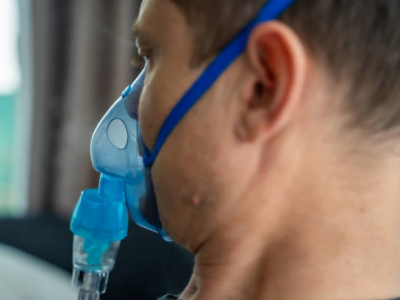A randomized clinical trial conducted in Spain found that delaying antibiotics for children with acute uncomplicated respiratory tract infections (RTIs) reduced antibiotic use and did not result in longer duration or more severe symptoms compared with immediate antibiotics, a team of Spanish researchers reported today in Pediatrics.
However, no antibiotic prescribing is still the best strategy when it is clear that antibiotics are not needed, they said.
Three prescribing strategies evaluated
In the multicenter trial, conducted at 39 Spanish primary care clinics from June 2012 through June 2016, children ages 2 to 14 with pharyngitis, rhinosinusitis, acute bronchitis, or acute otitis media (ear ache) were randomized 1:1:1 to the different treatment strategies: immediate antibiotic prescribing (IAP), delayed antibiotic prescribing (DAP), or no antibiotic prescribing (NAP).
The children were included only if their pediatrician had reasonable doubts about the need for an antibiotic.
Under the DAP strategy, which is commonly used for adults primary care when there is doubt about whether the infection is bacterial, providers advise that antibiotics should only be taken if the patient's condition worsens. Currently, there is little evidence about the use of this strategy in children, who are frequently prescribed antibiotics for RTIs and in many cases don't need them because the infection is viral.
Parents in the study, regardless of the arm, were told that their children were likely to feel more or less the same for up to 4 days from symptom onset for acute otitis media, 7 days for pharyngitis, 15 days for rhinosinusitis, and 20 days for acute bronchitis, and those in the DAP arm were advised to start antibiotics only if their children did not start to feel better after the specified number of days for the diagnosed condition. Parents in the IAP and NAP arms were advised told to consider returning to the doctor if symptoms didn't improve after the specified number of days.
The primary outcomes were severity and duration of symptoms for acute uncomplicated RTIs over 30 days. The secondary outcomes included antibiotic use over 30 days, infection-related complications, and parent satisfaction and beliefs regarding antibiotic use.
Among the 436 children in the study, mean age 6.3 years, 224 (51.4%) had acute otitis media, 146 (33%) had pharyngitis, 40 (9.2%) had acute bronchitis, and 26 (6%) had rhinosinusitis. The mean duration (standard deviation [SD]) of severe symptoms was 10.1 days (6.3) for IAP, 10.9 (8.5) for NAP, and 12.4 (8.4) for DAP, and for moderate symptoms the mean duration was 10.2 (7.5) for IAP, 10.0 (8.4) for NAP, and 11.7 (8.7) for DAP. But the differences for both severe and moderate symptoms were not considered statistically significant.
The greatest severity for any symptom on the 7-point Likert scale was also similar for the three arms, with a median interquartile range score of 3 (moderate symptoms).
Antibiotic use was significantly higher in the IAP arm (96%) compared with DAP (25.3%) and NAP (12%), as were gastrointestinal adverse effects. Other complications, additional visits to primary care, and parent satisfaction were similar in all three arms. But belief that antibiotics were very or extremely effective was significantly higher for parents of children in the IAP arm (86%) than in the DAP (42.2%) and the NAP arms (29.1%).
"DAP is an efficacious and safe strategy for reducing inappropriate antibiotic treatment of uncomplicated RTIs in children when the doctor has reasonable doubts regarding the indication," the authors wrote. "DAP is therefore a useful tool for addressing the public health issue of bacterial resistance."
"However, NAP remains the recommended strategy when it is clear that antibiotics are not indicated like in most cases of acute bronchitis," they added.
Anticipatory guidance preferable to antibiotics
In a commentary that accompanies the study, clinician-researchers from Children's Hospital of Philadelphia and the University of Pennsylvania Perelman School of Medicine say that the findings suggest delayed prescribing is a strategy that can help reduce antibiotic overuse. This is especially important, they add, in a country like Spain, where antibiotic prescribing rates are high
But they note the DAP strategy has not been shown to be better than not prescribing antibiotics and re-evaluating a child if their symptoms don't improve—a strategy known as "watchful waiting." They also say that, outside of acute otitis media, a condition for which the DAP strategy has been shown to safely reduce antibiotic exposure, delayed prescribing for acute RTIs in children is not prudent.
Their advice for pediatricians is to avoid antibiotics altogether, either immediate or delayed, when they have enough confidence that the child has a nonbacterial infection.
"Instead, providing anticipatory guidance about the typical course of a viral infection and which signs or symptoms warrant contacting a clinician are paramount and have shown to be effective: parents want and deserve an explanation and a plan, not necessarily an antibiotic," they wrote.
They further advise pediatricians to practice diagnostic stewardship through application of evidence-based diagnostic criteria for acute otitis media and sinusitis and judicial use of streptococcal testing for pharyngitis. And when antibiotics are indicated, "short and narrow spectrum should be the rule," they said.























